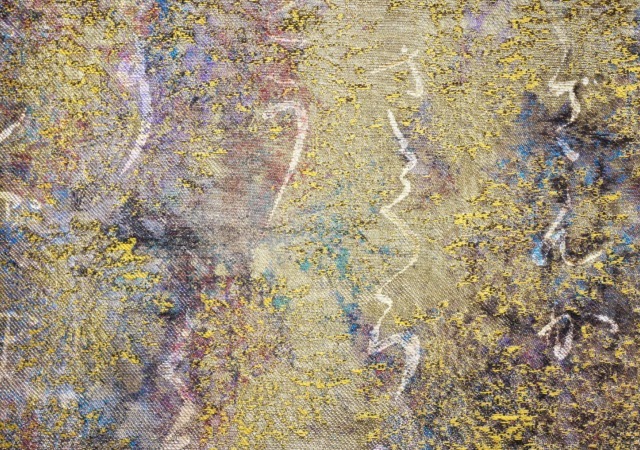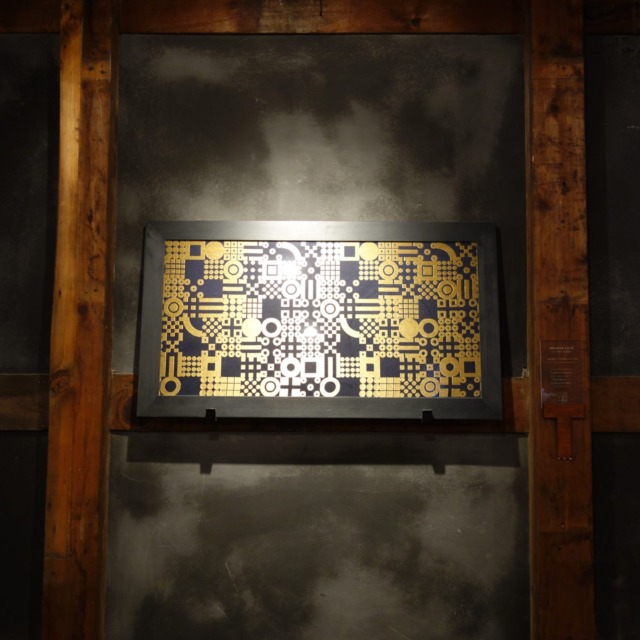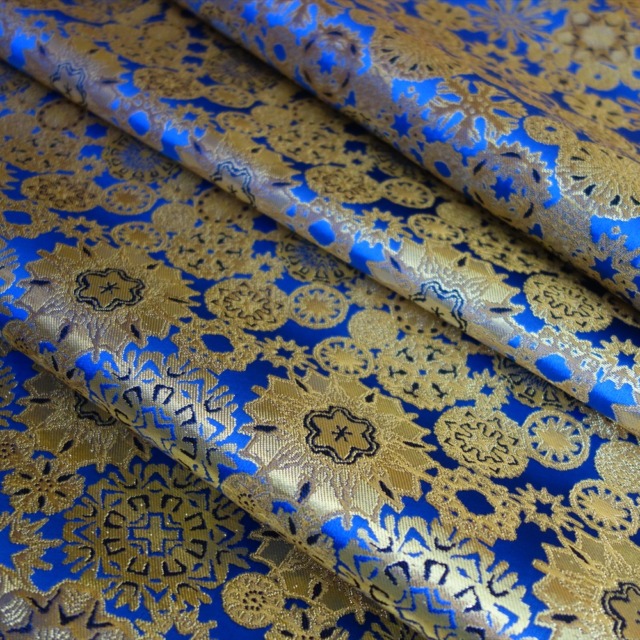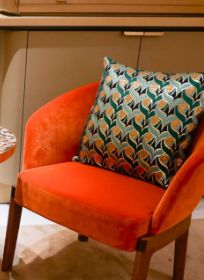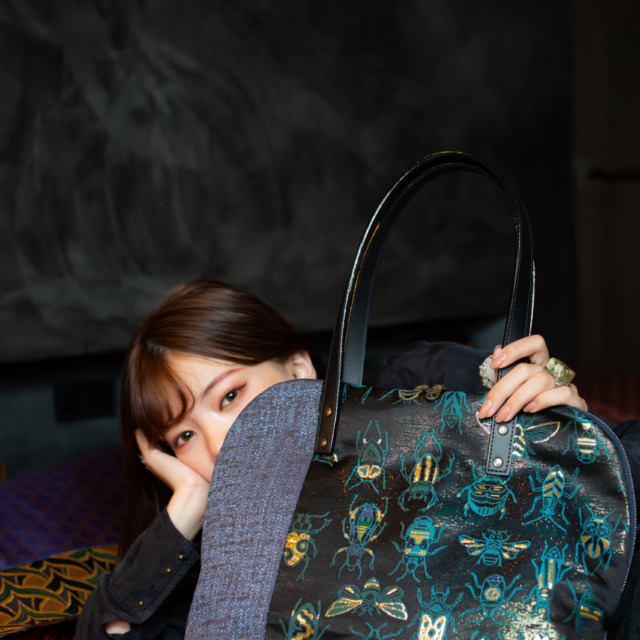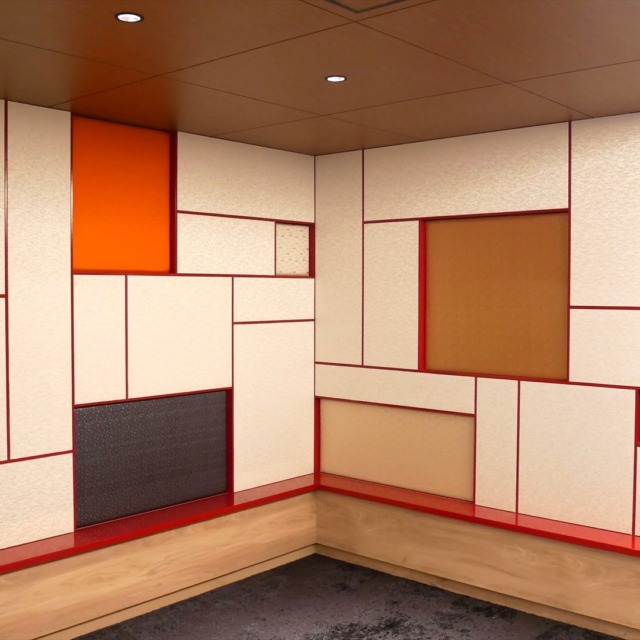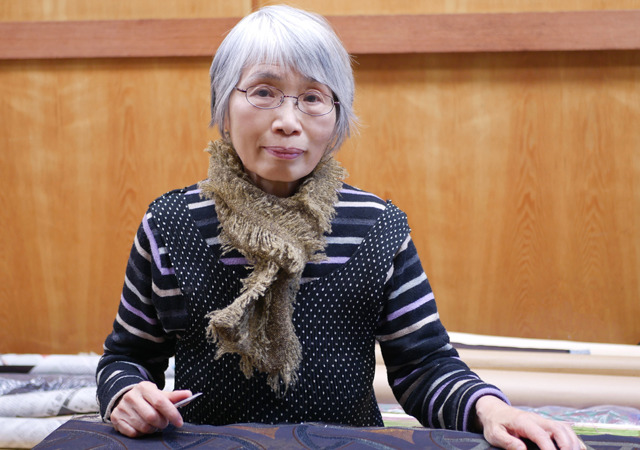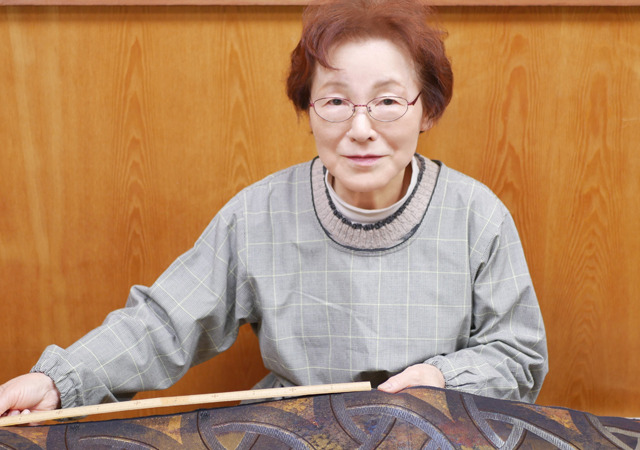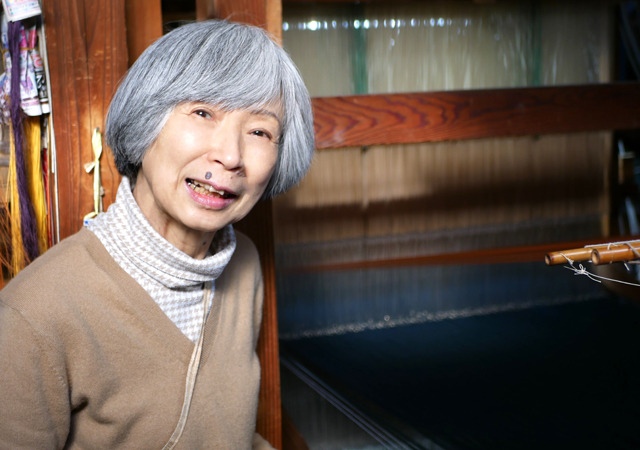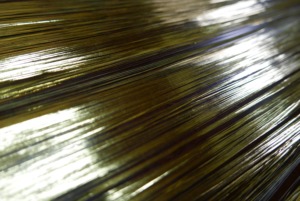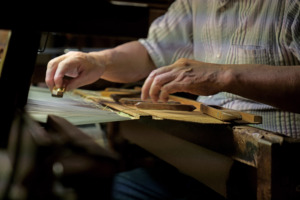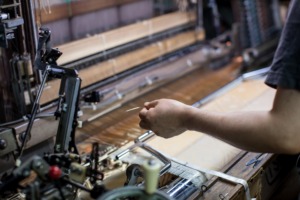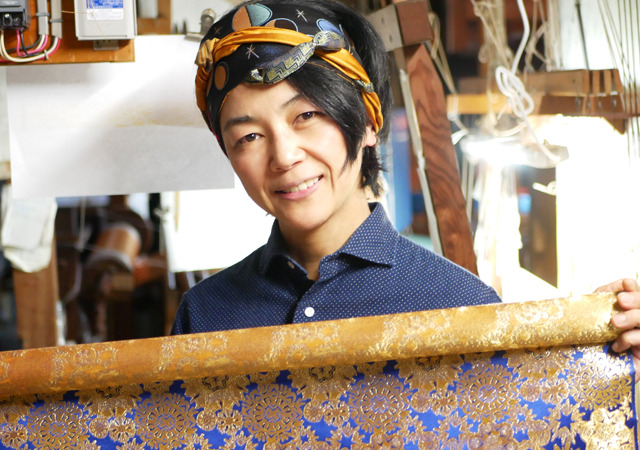

Traditional Nishijin technique: Hikibaku|Techniques|Nishijin Okamoto ‘A’
We at Okamoto Nishijin have been weaving gorgeous Nishijin brocade using a technique known as “honkin hikibaku” since the company was founded. Starting with this issue, we will write about the “A B C” of hikibaku in three parts.
This time it is “A”.
Traditional Nishijin technique
Characteristics of Nishijin textiles
Nishijin textiles are one of Japan’s world-class traditional crafts. Its most distinctive feature is ‘yarn-dyed textiles’, in which the threads are dyed first and woven in different colours to produce a depth of colour and texture when woven.
Special technique inherited in “Nishijin Hikibaku”
There is a special weaving technique called Hikibaku, which is now only woven in Nishijin or parts of Tango from a technique that originated in Japan. This is a unique weaving technique that uses foil threads made from flat, short, thin washi paper to give fabrics a distinctive sheen and texture.
Gold-leaf-Hikibaku
The lacquer for Hikibaku is applied in layers. It takes skill to apply the lacquer thinly and evenly on the paper to the desired thickness so that the lacquer does not build up.
If the lacquer is applied thinly so that the texture of the paper is expressed before the gold leaf is applied, the result is an elegant foil thread with a dull glow, known as “sabi-baku”.
The production of foil threads began as a traditional manual process and has evolved in modern times to mass production using polyester film and vacuum evaporation machines. The drawn foil technique, which is used on both hand and machine weaving machines, requires delicate work.
One of the properties of lacquer is that the urushiol oxidises and hardens to form a coating film with excellent water, heat and antiseptic properties. The more lacquer coats applied to lacquerware and buildings, the more robust they become.
To the right is a photograph of the honkin hikifoil thread used by our company and a video showing how the “hikifoil thread and honkin thread” used in Nishijin textiles is produced
©@Kyoto Gold and Silver Textile Industry Cooperative Association.
Foil with patterns on it
Pattern pulling foil production
Today, various colouring techniques are used for Hikibaku and patterned foil threads have been created. Patterned foils are produced by colouring Japanese paper with lacquer, using gold and silver sanding, heating silver foil or using coloured foil. As each piece is handmade, no two are ever the same. When making foil threads from a continuous piece of paper, the pattern is applied in such a way that there are no differences between the paper and the paper joints.
Patterned foil must be woven in the same order as like kasuri, and if the threads are woven in the wrong order, the intended pattern will not be achieved.
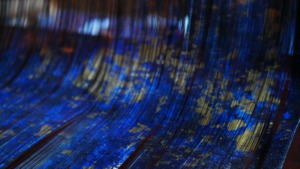 Pearl-powder genuine silver leaf patterned drawing foil Pearl-powder genuine silver leaf patterned drawing foil |
Nishijin kinran brocade HIKIBAKU with pearl powder and silver foil. |
Cutting and sizing
Cutting is an important process that converts paper into yarn.
The paper is cut with the four sides of the paper remaining uncut. In Nishijin, there is a ‘cutting studio’ where paper is cut. Our company often cuts in 1sun 90 kiri (each piece is about 0.3 mm for a curved scale of 1sun 3.03 cm), but the width of the cut is changed depending on the application.
Hikifoil is made from custom-made threads in the size ordered by each weaver. In our case, the sizes are different for hand looms and power looms.
We weave with the calculation that one sheet of foil can weave approximately 60 cm or more. The photograph below shows the Hikibaku paper for the Nishijin kinran brocade width on a power loom before cutting.
Weaving
When weaving, weavers pay the greatest attention to the preparation of the foil and ensure that the foil is woven in correctly. Hikibaku can only be woven on hand looms and power looms.
Before weaving, the foil, which is usually double-folded, is unfolded. Two or three days before weaving, the paper in the four corners of the Hikibaku is cut off and weights are placed on the foil to correct any distortion of the paper. If the foil is distorted, it will turn over during weaving or react to the several sensors in the automatic drawing foil device, making weaving impossible. Even when weaving on power looms, dust and other factors can cause the sensors to react badly.
Our Hikibaku is not only woven by drawing in foil threads, but also by Jacquard, where the foil threads themselves are made into a pattern weave and the pattern weave is overlaid with silk threads to create a sense of heaviness.
Hikibaku is one of the weaving techniques that expresses the charm of Nishijin brocade.
*Ordinary products, such as those listed in our online store, use silver-based gold threads instead of hikibaku.
-
Thoughts on Nishijin Craftsmanship
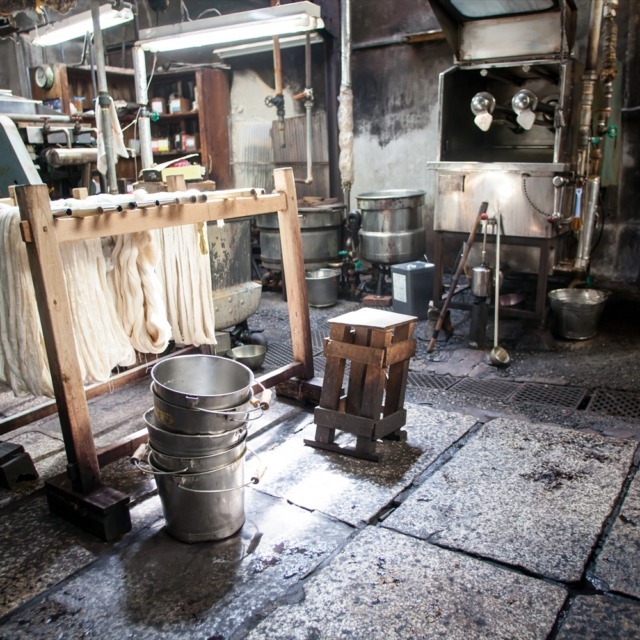
-
Traditional Nishijin technique: Hikibaku|Attraction|Nishijin Okamoto 'B'
